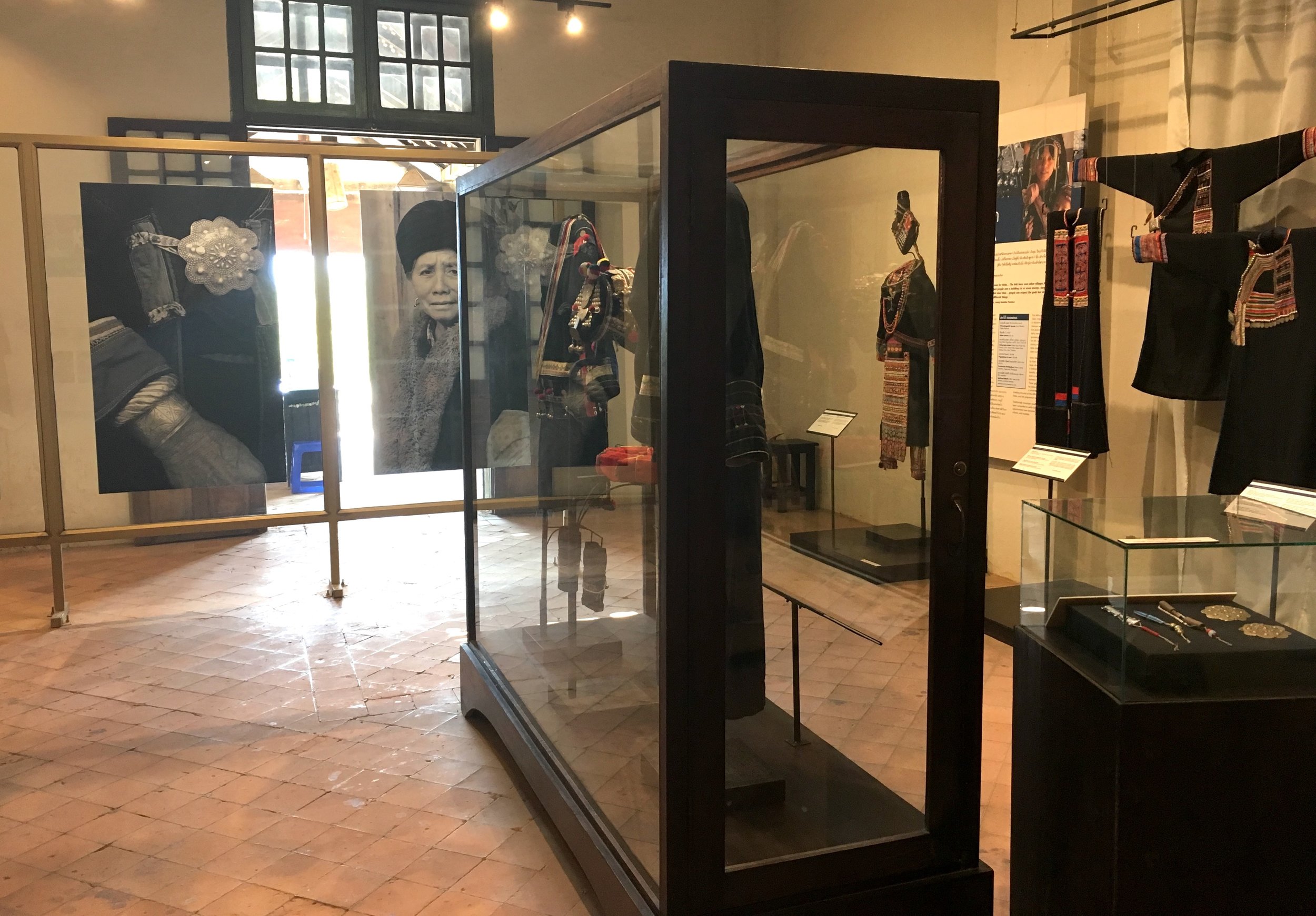TAEC (Luang Prabang)
Luang Prabang, Laos. The mission of the Traditional Arts & Ethnology Centre is to promote learning and exchange, appreciation and pride in the ethnology and artisanal heritage of Laos. TAEC stimulates investment and preservation of crafts and sustainable livelihood, and recognizes the role of the environment with a small ethnobotanical garden on site. Their interpretation represents a contemporary point of view, and appeals directly to the tourist audience, in a subtle, thoughtful manner.
Throughout their small exhibition space, strong photography (on staff) connects the beautiful clothing to real people and their communities.
A few text examples:
"This hat was made by a Mong woman in Minnesota as a gift to her cousin in Laos..."
"...These days, factory reproductions made with fluorescent printed polyester are also common."
"...mothers will spend many months preparing ornate costumes for their daughters and sons to wear, and some will request sequins, fabrics, and new designs to be sent from overseas relatives."
"Every Akha Nuqui woman carries a needle case under the waist of her tunic for sewing and embroidery. Traditionally made of bamboo, modern designs use everything from scrap metal to plastic pens."
Along with a thorough overview of the main Lao ethnic groups, and the many subgroups, is this general statement:
On the subject of our changing world and cultural identity:
Several Interactive boxes invite visitors to identify, by touch only, whether a material is natural or synthetic. A opportunity to say more about factors of environment, labor, cost, and aesthetics.
An elaborate exhibition explores the specific use of beads from the plant "Job's Tears" by many cultures on different continents, expanding their theme to a world-wide perspective. TAEC gives specific tips on how to identify what is truly handmade, and how to bargain respectably. In this way, without pointing to tourists directly, they're able to educate and sensitize them to their role as buyers.
A cozy little cafe.
As part of the activity area, (beyond the store and next to the cafe), authentic clothing is provided for kids to try on.
The call for donations gives clear choices in terms of where the donor's money is allocated. 50% of store sales go back to the artisans, mostly rural minority women. Financial details are explained openly in signage.
A documentary video monitor is placed right at the exit, without good seating, which seems disconnected, except for those who linger at the little cafe or activity area.













